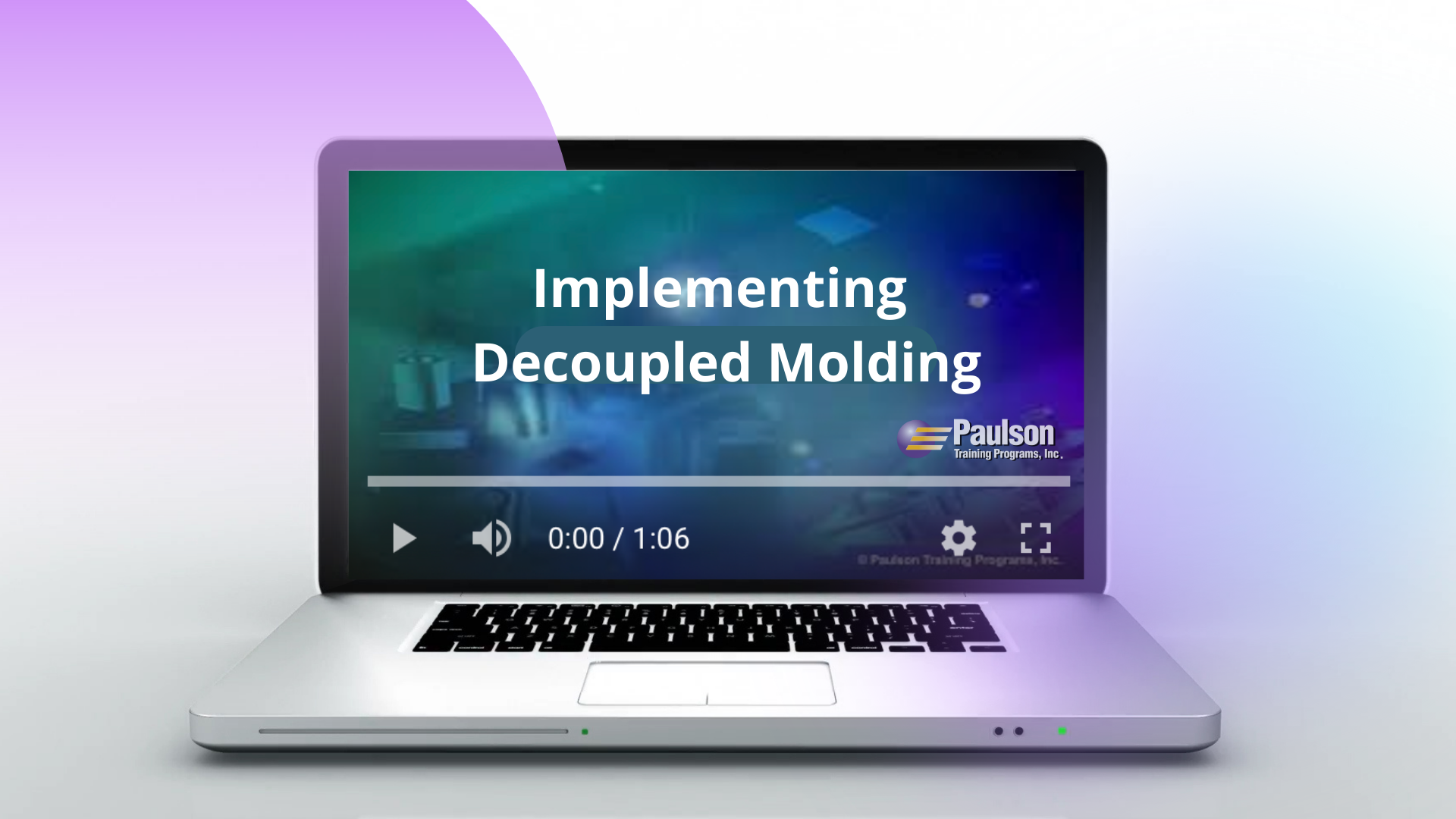IMPLEMENTING DECOUPLED MOLDING
Goals of this Course:
- Achieve a high level of accuracy and repeatability in the molding process
- Determine the present capabilities of your molding machines
- Learn the differences between Decoupled Molding and traditional molding
- Implement a molding methodology that will improve productivity and quality
This training course, developed in cooperation with RJG, improves process consistency by separating (or “decoupling”) the molding process into three phases: filling, packing and cooling. Topics include pressure transducer specifying and installation in the cavity, reading and interpreting pressure charts from molding cycles, specific molding techniques that produce consistent part properties, and determining the present capabilities of your molding machines and how to “tune” them for maximum performance.
Designed as a reinforcing tool for those molders who currently use decoupled techniques and as a thorough technical primer for molders who want to implement Decoupled Molding™, this course is invaluable for any molder who wishes to increase productivity and quality on the molding floor using the latest process developments in injection molding.
Decoupled molding is a system of molding techniques designed to achieve a high level of accuracy and repeatability in the molding process even as molding conditions like viscosity naturally vary. Learn how to establish a methodology for setting up a decoupled molding process and the basics of pressure chart reading to identify problem areas.
Lesson 1: Introduction to Decoupled Molding
Explains the goals of the course and defines the necessary terminology. Defines decoupled molding and decoupled molding techniques. Discusses the effect of normal viscosity variations on peak cavity pressure, types of transducers and their best applications.
Lesson 2: Preparing for Decoupled Molding
Discusses Decoupled Molding II and III in greater depth, highlighting when to use each type, the objective, fill, pack and hold techniques. Teaches the importance of plastic flow and viscosity variations to the molding process. Explains the difference between process monitoring and process control and the best techniques for each.
Lesson 3: Implementing Decoupled Molding
Discusses processing strategies that utilize consistent plastic properties to produce consistent part properties. Uses pressure chart analysis to understand what is happening during the molding cycle and to spot the problem areas. Gives a methodology for setting up a decoupled process from mold and machine considerations to setting proper filling, packing, and holding parameters.

